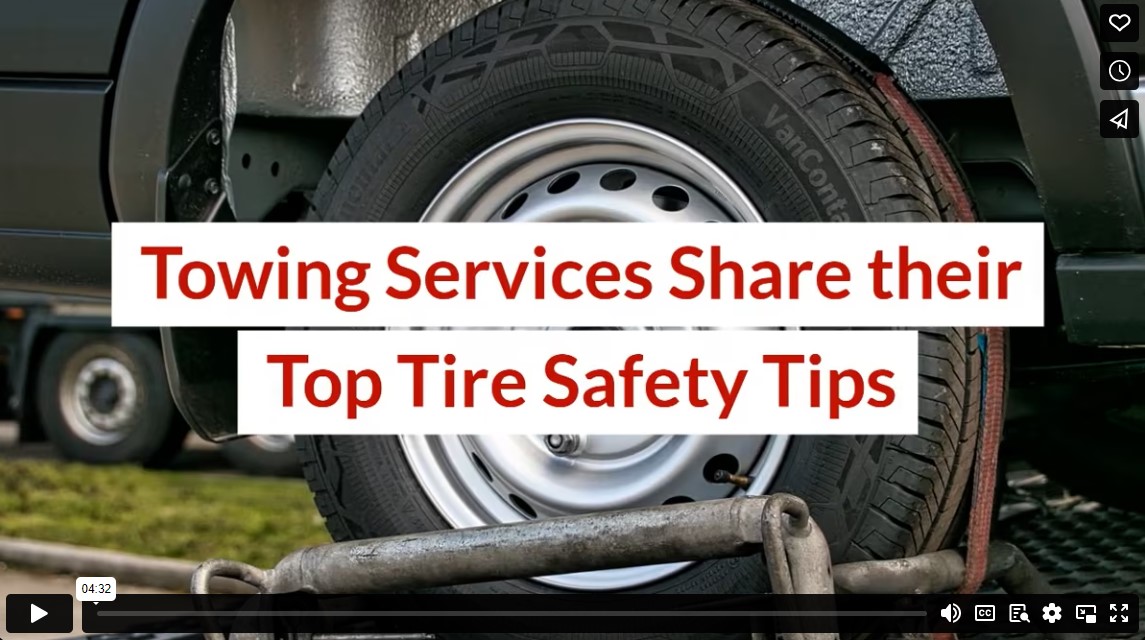Here at Roadside Rescue, we perform a lot of towing services in Layton, Ogden, and all across Utah’s Wasatch Front. While the reasons for the tows vary, many are tire-related.
Tires are an extremely important component of every automobile. They are the foundation of a vehicle. No matter the complexity of an engine or the fanciness of a paint job, a car without wheels will not get from point A to point B. Tires are always a required travel necessity, which is why they come with their very own set of safety tips and guidelines.
Tires can alter your entire driving experience. How your car operates and moves is connected to the quality and condition of your tires. Not to mention, tires can impact your safety and the safety of others around you on the road.
So what can you do to ensure the tires on your automobile help your driveability and keep you from needing a tow truck here in Utah? We recommend that you follow these three tire safety tips.
1. Choose a type of tire based on intended usage
Tires are not a one-size-fits-all car accessory. Did you know that certain types of tires can increase your fuel efficiency? Did you know that you can buy tires specifically designed to withstand highway wear and tear? Or did you know that you can purchase tires meant to perform better in the winter versus the summer?
Let’s say you commute to work daily and put a significant amount of miles on your car. There’s a tire for that. Let’s say you live in a climate where you are bound to drive on wet or snowy roadways more often than dry ones. There’s a tire for that, too.
When purchasing tires, you should always look for a type of tire that matches your specific circumstances. For example, winter tires will outperform all-terrain tires in snow. Likewise, touring or highway tires will outlast warm-weather tires when it comes to freeway travel.
The type of tire that works best for a friend or family member may not be the right fit for your situation. Take a moment to research what kind of tire will best serve your lifestyle and correlate with your needs in order to make an educated purchase.
2. Get the most out of your tires through proper maintenance
Once you’ve bought the right type of tires based on your intended usage, it’s time to maintain those tires.
Tire pressure – Check your tire pressure often. Every kind of tire comes with a recommended PSI – pounds per square inch.
When you keep your tires within that suggested PSI range, you increase the longevity of your tires and improve their performance. You should not drive on overinflated or underinflated tires. Proper inflation allows your tires to operate effectively and efficiently.
And remember, heated tires will have a different PSI than cold tires. So to obtain the most accurate results, do not check the tire pressure after a long drive. Rather, verify the PSI when the tires have been sitting for several hours or overnight.
Tire rotation – Tires should be rotated regularly to promote even tread wear. Irregular wear can shorten the lifespan of your tires and make them dangerous to drive on.
Most often, tires need to be rotated every 5,000-8,000 miles. There is one exception to this rule, though. If your front tires are not the same size as your rear tires, then a typical tire rotation is not needed.
To best know how and when to rotate the tires for your exact make and model of vehicle, check the owner’s manual for specific details.
Tire balance – Wheels need to be balanced to ensure the weight of the tire is within the correct parameters. Balanced tires help the wheel to roll smoothly. Unbalanced tires can cause the steering wheel to vibrate and can lead to unsafe driving conditions.
Tire alignment – A tire alignment is needed to adjust the suspension angle of your wheels. Rotating or balancing your tires will not align your tires. If the suspension is out of alignment, your tires will feel the brunt of it. You even run the risk of experiencing steering problems when your car is misaligned.
3. Perform regular visual inspections
Regular visual inspections can catch small problems before they turn into big problems, and big problems turn into expensive repairs or life-threatening situations. Look out for:
- Uneven tread wear
- Decreased tread depth
- Bulges, bubbles, blisters
- Cracks, splits, tears
If you notice any of these problems, your tires need immediate attention. Also, if your tires seem to be the source of unusual noises or vibrations, this could indicate you need new tires entirely. Do not underestimate the value of a simple visual inspection every so often.
When in Tire Trouble
Quality tires in optimal condition keep a car functioning as it should. But moreover, quality tires in optimal condition keep drivers safe.
If you ever find yourself in tire trouble, Roadside Rescue can help. Our 24-hour truck tire service is available seven days a week. Whether you need reliable towing or roadside assistance, our WreckMaster-certified technicians will know just what to do. Contact us today.
Video

